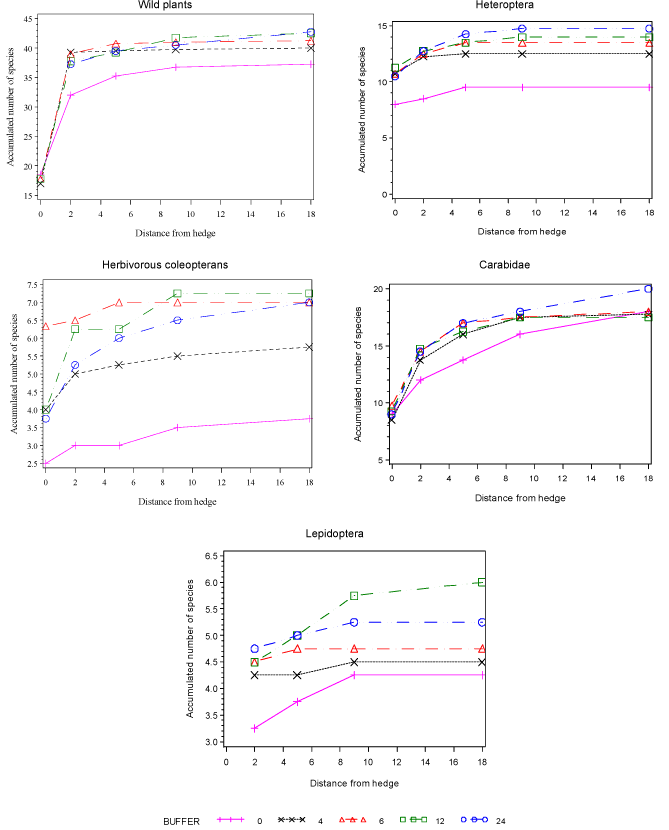Buffer zones for biodiversity of plants and arthropods: is there a compromise on width?

Fig. 3.28. The accumulated number of species in July of wild plants, Heteroptera, herbivorous coleoptera (complex of Chrysomelidae and Curculionidea), Carabidae and Lepidoptera at increased distance from the field edge within the five treatments. Distance 0 indicates the species number within the herbaceous layer at the hedge bottom. Butterflies were not recorded at distance 0 specifically, but in the edge zone (hedge – 4 m within the field). The estimetes presented in this Fig. are the no. of total species per plot at the accumulated distances, and estimates are therefore higher and not directly comparable to the estimates of species richness presented in the previous sections (3.1 – 3.2) where species richness were estimated per sample.
Version 1.0 November 2009, © Danish Environmental Protection Agency